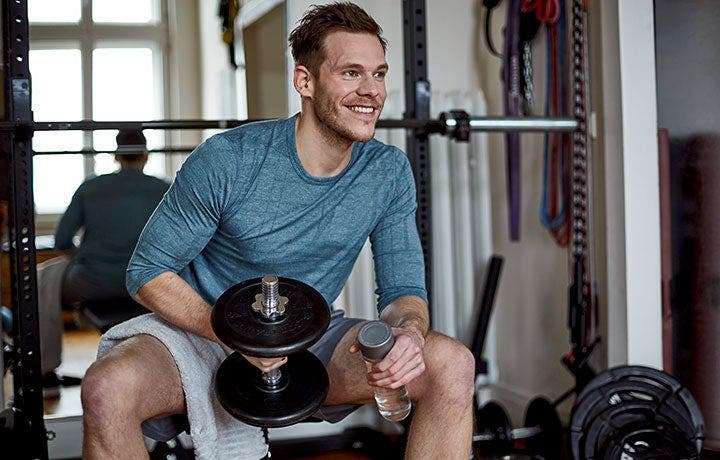4 Types of Strength Training You Should Know About


We've known since 1986 that strength is linked to longevity, and the stack of evidence only grows. A study in the Journal of Cardiopulmonary Rehabilitation and Prevention found that strength can protect against heart disease. The strongest people generally have the fewest age-related disabilities. Stronger people typically gain less weight and have lower body fat. Well-trained muscles can also help clear glucose from your blood and raise your insulin sensitivity.
In addition, lifting can boost your metabolism and help you maintain and even increase bone-mineral density. Oh, and how about this: You’ll look, move and feel better.
Strength training comes in a variety of types. The following introduces you to four of the most popular strength training tools, as well as some good workouts to start you off. If you have your doctor’s OK, it’s time to pick up some iron and break a sweat!
1. Dumbbells & barbells
What they are: Dumbbells are probably the oldest tool that was invented specifically for exercise. The most common are fixed weight, starting at 1 pound each. You can also get adjustable dumbbells, which allow you to slide weight plates on or off.
A standard barbell is an inch thick, 5 to 7 feet long, and usually 10 pounds. An Olympic barbell—the kind used in competitive lifting—is 2 inches thick on the ends, where you put the weight plates, and is usually 7 feet long and 45 pounds.
Why they work: You can't beat dumbbells for versatility. They allow you to use one or both arms on upper-body exercises, or to add resistance for lower-body moves. For home exercisers, a basic barbell set is the easiest and cheapest way to start lifting. It's also a great tool for making incremental progress, since you can find plates as small as 1.25 lbs.
Try this: Upper-Body Chair Workout
2. Bodyweight only
What it is: Being able to lift your own body to jump, climb, or push obstacles away was once a crucial survival skill. Now, in a mostly danger-free world (not counting Black Friday), body-weight exercises are a great way to improve your body's strength and overall fitness.
Why it works: You can't beat the cost or convenience. Wherever you are, there's your gym.
Try This: 5 Bodyweight Exercises You Should Be Doing for Bone Health
3. Kettlebells
What they are: Although these flat-bottomed iron balls with handles were once a staple among strongmen, kettlebells disappeared from American gyms for close to a hundred years, until Russian trainer Pavel Tsatsouline reintroduced them in the early 2000s. They're now ubiquitous, available in all sizes and colors.
Why they work: The weight of a kettlebell is offset, which gives you a fun and challenging way to improve your speed, balance, and coordination along with your strength.
Try This: Your Go-To Kettlebell Workout
4. Suspension system
What it is: Suspension trainers are straps with handles that hang from an overhead attachment point, usually a chin-up bar. Like kettlebells, they first appeared in health clubs about a decade ago.
Why it works: The straps add a balance and coordination challenge to body-weight exercises, bringing into play both large and small muscles from head to toe.
Try This: TRX Core Workout
